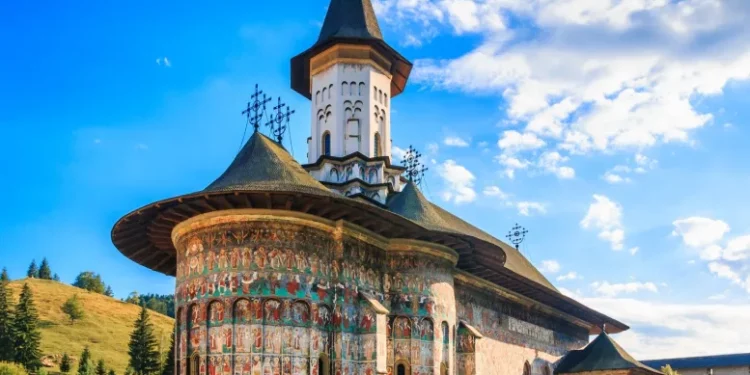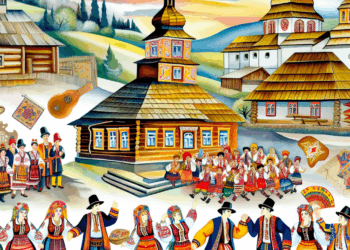Little-known origins of Bukovina’s history: from princely times to the Soviet era
Located at the crossroads of historical cultures and civilisations, Bukovina has a rich and diverse heritage. This region, at different times part of different states, has always remained a centre of attraction for a multitude of peoples, cultures and religions. This article will discuss little-known facts about Bukovina in different historical periods, from the princely times to the Soviet era.
Princely times: Foundations of culture formation
The first mentions of Bukovina date back to the 9th century, when these lands became part of Kievan Rus. At that time, the territory was inhabited by Slavic tribes, and the importance of the region can be considered the presence of dense forests and fertile lands.
By the XI-XII centuries the territory became part of the Galicia-Volyn principality. Interesting fact: in 1199 Prince Roman Mstislavich united Galicia and Volyn, creating a powerful state association. During this period, the first feudal associations emerged, and the residence of the princes was located in the city of Chernivtsi, which became the administrative centre of the region.
However, the most significant development of the region’s culture was due to the monarchies that ruled after the collapse of the principality of Galicia-Volhynia. In the XIII-XIV centuries, new cultural and religious influences appeared on Bukovyna land thanks to the arrival of Moldovan princes.
Period of the Moldavian Principality
Although Bukovina was part of the Principality of Moldavia, its history is not limited to this state entity. Starting from the XV century, the Principality began to develop actively, which in turn affected Bukovina. This time was a time of revival of art and architecture, when churches and monasteries were built on the land of architecture.
In 1538 Moldavia was under the control of the Ottoman Empire, which also affected the local culture. Interestingly, between 1672-1699 Bukovina was simultaneously under Ottoman and Austrian influence – until 1699 the Ottoman Empire controlled the territory until it was ceded to the Austrian Empire by the Peace of Karlovac.
The Austrian Empire: Multiculturalism and Transformation
In 1775, after the war with the Ottoman Empire, Bukovina was incorporated into the Austrian Empire. This period became significant for the demographics of the region. Under the proper management of the Austrian authorities, a unique multicultural environment began to form here, where not only Ukrainians, but also Romanians, Jews, Poles and Germans lived. In 1786, the Habsburg monarchy created the Governorate of Bukovina, with its centre in Chernivtsi.
The Austrian administration introduced a system of education in the native languages of the various national minorities. In 1862, a university was opened in Chernivtsi, which became one of the significant cultural and educational centres for the whole region. The University of Uzhgorod attracted students not only from all over Bukovina, but also from beyond its borders. For example, in 1906 it had 1955 students who studied in German, Romanian, Russian and Ukrainian.
The Austrian period was also a time of active economic prosperity: agriculture, industry and transport began to develop. The railways built at this time contributed to a significant increase in trade. Chernivtsi, in fact, became an important trading hub, where the trade routes of East and West crossed.
The Interwar Years: The Search for Identity
After World War I and the collapse of the Austrian Empire, Bukovina became part of Romania. This period was a period of search for identity for many of the peoples who inhabited the region. The year 1918 was pivotal: Bukovina declared independence, and on 15 November of the same year, a Unionist declaration on the region’s incorporation into Romania was signed.
In the interwar years, Bukovina actively developed its culture and self-government regime. Facts that are not often spoken about: local authorities supported initiatives to establish Ukrainian, Jewish and Romanian cultural and educational societies. In 1924, a Jewish theatre was founded in Chernivtsi, which became a significant part of the cultural life of the population.
The modern architecture of continued Romanian rule was reflected in the creation of new public buildings, which facilitated the integration of new cultural layers.
The Soviet Era: Social Transformation and Repression
The Second World War strongly affected the fate of Bukovina, which was annexed by the Soviet Union in 1940. At the beginning of 1941, active political and social changes began in the region, including repression of local inhabitants. Minorities, such as Jews, were severely persecuted.
However, with the restoration of Soviet power, a different evolution of the region began. Under Soviet leadership, reforms such as collectivisation were carried out, which affected traditional ways of farming. An important contribution to the development of the region was the establishment of new educational institutions, which promoted education and literacy among the local population.
It is also worth noting the cultural work and initiatives aimed at preserving and developing local folklore and traditions. In the 1950s in Bukovyna a clearly defined national self-conscious trend was formed, which was reflected in the literature and art of that time.
Conclusion
Despite its centuries-long history and complex destinies, Bukovyna has remained a diverse region where different cultures and traditions are intertwined. Little-known but significant historical facts of the last 500 years show how the formation of this unique culture took place, in which the preconditions for future development were created. The region has gone through various شكلov changes, preserving its identity and culture. This makes Bukovina an important object for further research and understanding not only of its past life, but also of its present state.
By studying the history of Bukovina, we can better understand the diversity and complexity of human destiny, reflecting the common experience of the many peoples who have inhabited these lands over the centuries.








